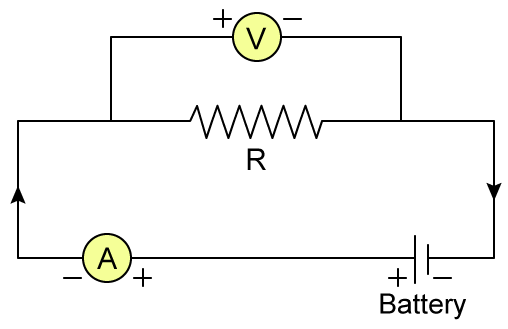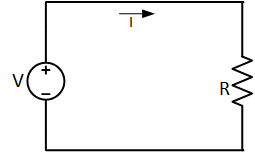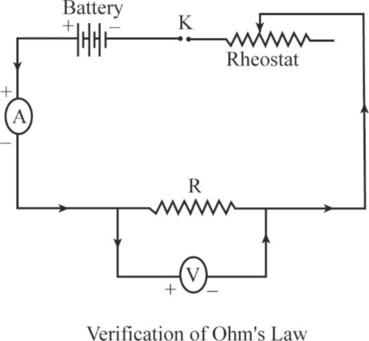State And Explain Ohm S Law With The Help Of Circuit Diagram

Ohm s law states that under constant temperature the current passing through conductor is directly proportional to potential difference applied across it.
State and explain ohm s law with the help of circuit diagram. The concept behind ohm s law was first explained by german physicist georg ohm who the law is also named after. Here they are trying to explain about the flow and the nature of flow of current when a resistance is developed in the circuit in which it flows. Where i is the current through the conductor in units of amperes v is the voltage measured across the conductor in. Ohm s law states that the current passing through the conductor will be directly proportional to the potential difference if the temperature remains constant throughput the circuit.
The flow of current is opposed by the resistance of the conductor and circuit. The relation between voltage current and resistance is explained by the ohm s law. In rlc ac circuit the total opposition to the current is impedance z which is the combination of two orthogonal elements resistance and reactance. It is measured in ohms.
Ohm s law states that the voltage or potential difference between two points is directly proportional to the current or electricity passing through the resistance and directly proportional to the resistance of the circuit the formula for ohm s law is v ir this relationship between current voltage and relationship was discovered by german scientist georg simon ohm. Introducing the constant of proportionality the resistance one arrives at the usual mathematical equation that describes this relationship. Ohms law definition ohms law application ohms law limitation solving circuits using ohms law ohms law pie chart and matrix table questions. Ohm s law states that the current through a conductor between two points is directly proportional to the voltage across the two points.
Ohm s is not directly applicable to the ac circuits which involves inductors capacitors and or transmission lines. Ohm s law when an electric potential difference v is applied across a conductor as shown in the figure below some current i flows through it. In 1828 georg simon ohm a german physicist derived a relationship between electric current and potential difference. The attached figure shows the circuit diagram to verify ohm s.
The tool for measuring volts in an electric circuit is called a voltmeter. Mathematically ohm s law is given by. The law can only be used for pure resistive ac circuits without any alterations. The above diagram is of the circuit used in the lab for verification of ohm s law.
The ohm s law is verified by the below circuit diagram. B is the battery to supply the current to the circuit rh is rheostat to control the current in the circuit k is key to connect or break the circuit a is ammeter to measure the current in the circuit v is the voltmeter to measure the potential. In ac circuits because the current is constantly changing other factors such as capacitance and inductance must be taken into account.
















